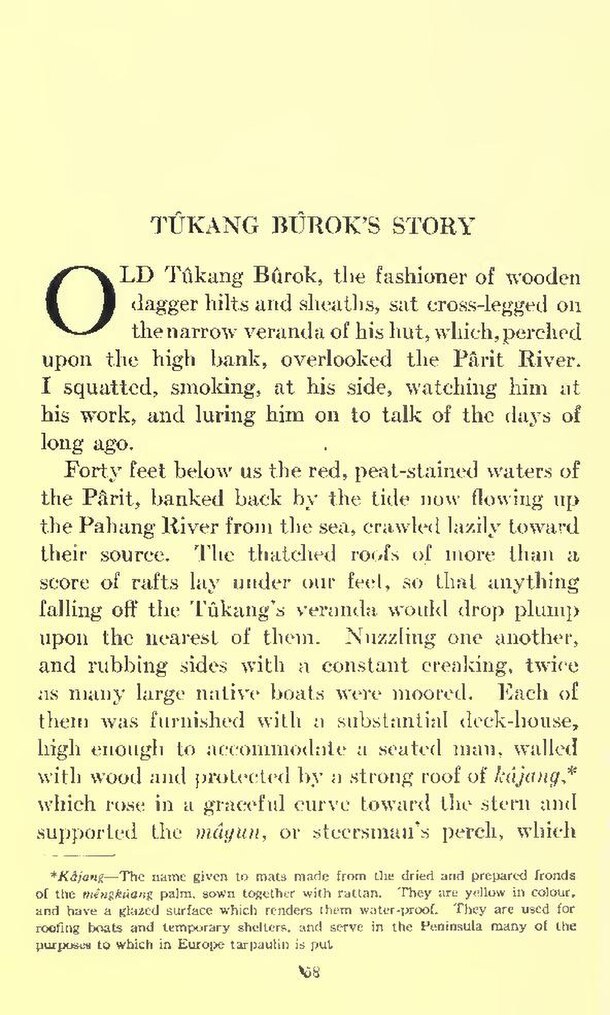TÛKANG BÛROK'S STORY
OLD Tûkang Bûrok, the fashioner of wooden dagger hilts and sheaths, sat cross-legged on the narrow veranda of his hut, which, perched upon the high bank, overlooked the Pârit River. I squatted, smoking, at his side, watching him at his work, and luring him on to talk of the days of long ago.
Forty feet below us the red, peat-stained waters of the Pârit, banked back by the tide now flowing up the Pahang River from the sea, crawled lazily toward their source. The thatched roofs of more than a score of rafts lay under our feel, so that anything falling off the Tukang's veranda would drop plump upon the nearest of them. Nuzzling one another, and rubbing sides with a constant creaking, twice as many large native boats were moored. Each of them was furnished with a substantial deck-house, high enough to accommodate a seated man, walled with wood and protected by a strong roof of kâjang,[1] which rose in a graceful curve toward the stern and supported the mâgun, or steersman's perch, which
- ↑ Kâjang—The name given to mats made from the dried and prepared fronds of the mêngkuang palm, sown together with rattan. They are yellow in colour, and have a glazed surface which renders them water-proof. They are used for roofing boats and temporary shelters, and serve in the Peninsula many of the purposes to which in Europe tarpaulin is put.
